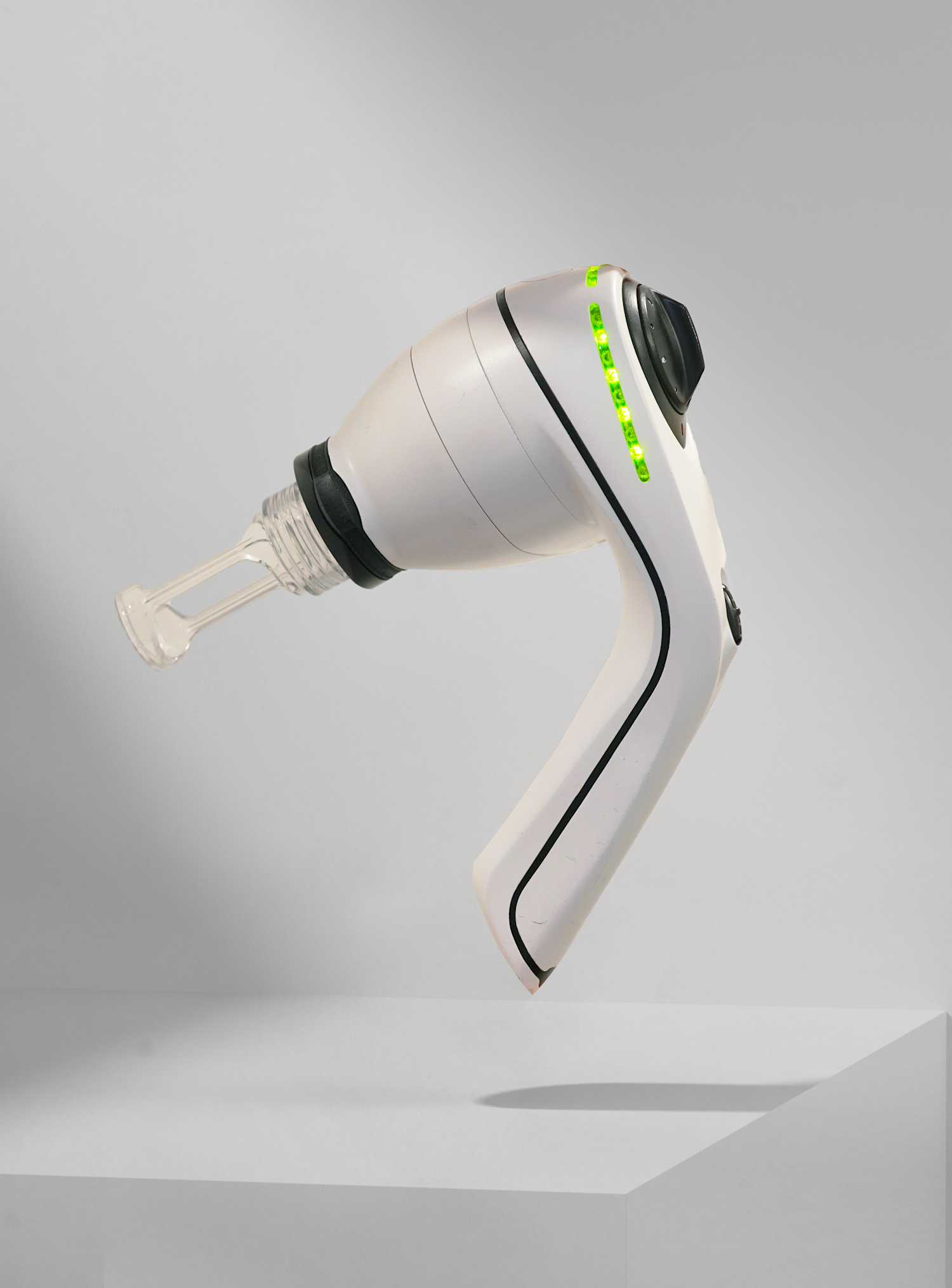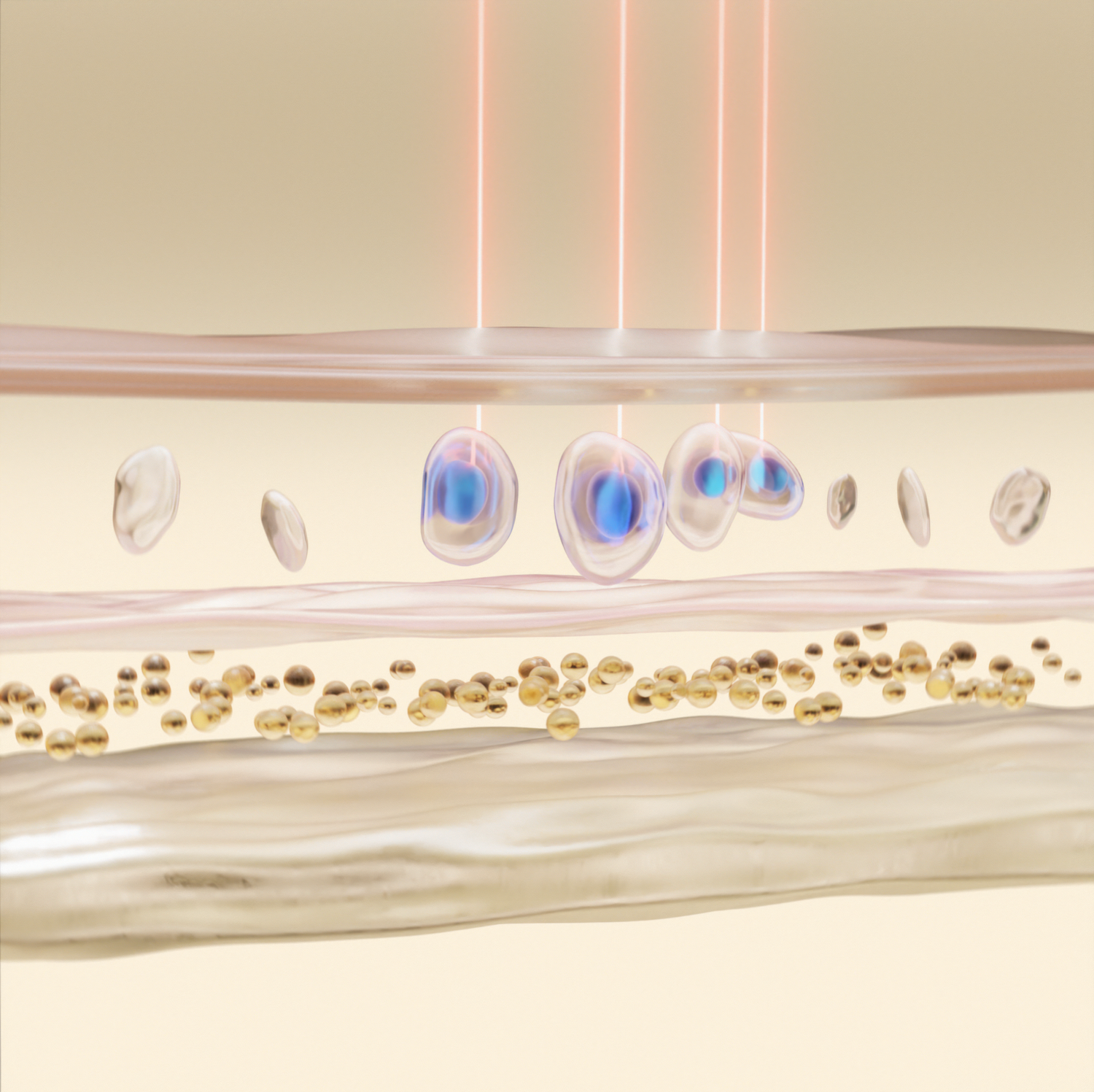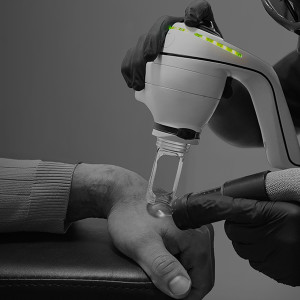
The LightSense® laser system is safer and faster than anything else on the market.* So how does it work?
Let’s start with what happens to the body when you get a tattoo. Ink is inserted directly into the dermis, the middle layer of the skin. The immune system identifies it as a foreign body and attempts to get rid of it by sending white blood cells, or macrophages, to where the tattoo is located. This attempt fails because the blocks of ink pigment are too big to budge, and so the tattoo becomes permanent.
This is also why tattoos sometimes fade immediately after they are created and will gradually fade over time. Ink that’s regularly exposed to the sun or gets a lot of contact, such as tattoos on your face and hands, will also break down more quickly. A layer of scar tissue forms around the remaining ink pigments, and this binds them in place.
*For the data, see the official LightSense® website

The amount of energy carried by a laser beam is determined by the wavelength, which is the distance between two peaks in the wave of the laser beam
Color laser removal and wavelength
For removal, lasers are used to break apart the large ink pigments that make up the tattoo. To put it simply, a laser is a light beam that carries energy. The ink pigments absorb this energy through photons (particles of light) and break apart.
The amount of energy carried by a laser beam is determined by the wavelength, which is the distance between two peaks in the wave of the laser beam, and is also what determines the color of the light. A laser with a wavelength of 450 nanometers, for example, is blue, whilst a laser with a wavelength of 700 nanometers is red.
A molecule can only absorb photons that correspond to the energies of the chemical bonds that hold the ink molecule together. If a photon doesn’t have enough energy, or too much energy, it can’t be absorbed. In lasers, the amount of energy is determined by the wavelength. This is how we remove color tattoos, using different wavelengths.
Dr Fiona Worsnop, Harley Street and NHS consultant dermatologist
“The technology is particularly effective at removing colored inks, which are notoriously tricky to clear.”

Older technologies
Existing laser tattoo removal technology relies on high energy laser pulses, with each pulse lasting around a nanosecond (one thousand-millionth of a second). When this laser light is absorbed by the ink, it heats up rapidly and expands. These very hot, expanded ink molecules are now in contact with the skin. This is what causes burns, blisters and sometimes even long-term damage such as scarring.
(Pulse width is how long the pulse of light is on the skin for. We measure in at just eight picoseconds, so the laser beam touches the skin for as short an amount of time as possible.)
What is frosting?
Once expanded, the ink breaks apart, releasing a large amount of energy into the surrounding skin very quickly. Bubbles of carbon dioxide are also released, floating to the surface of the skin and causing an effect known as frosting; an immediate whitening of the skin that occurs as soon as the laser impacts the skin. Frosting normally takes up to two hours to recede, meaning that the tattoo can only be treated once per session.
Older technology also uses large spot sizes, meaning the area of the skin that the laser beam hits is not very precise and the laser often falls on un-tattooed skin. The combination of burns from the heated ink as well as laser overspill causes severe pain, long recovery windows, and often irreversible damage to the skin.

NAAMA's LightSense® laser system
The LightSense® laser system – only available at NAAMA - takes a different approach to the traditional laser systems as it uses really low levels of energy at ultra-fast speeds. This allows lots of photons to be absorbed in a much shorter time which breaks the ink apart quickly before the energy can escape and damage the surrounding skin.
The result is that laser removal at NAAMA causes little to no burning and frosting that heals in seconds, so the skin can be treated twice in one session. There are much lower pain levels, vastly reduced chances of long-term damage, and hardly any downtime, meaning you can come back for sessions every one to three weeks rather than waiting up to three months. In short, the LightSense® laser system is fast, effective, precise, and kinder to your skin.
For trends in breakthrough laser tattoo removal technology, here are NAAMA's top laser FAQs.
What is the best laser for tattoo removal?
What is the newest laser technology for tattoo removal?
Talk to one of our experts to start your removal journey








